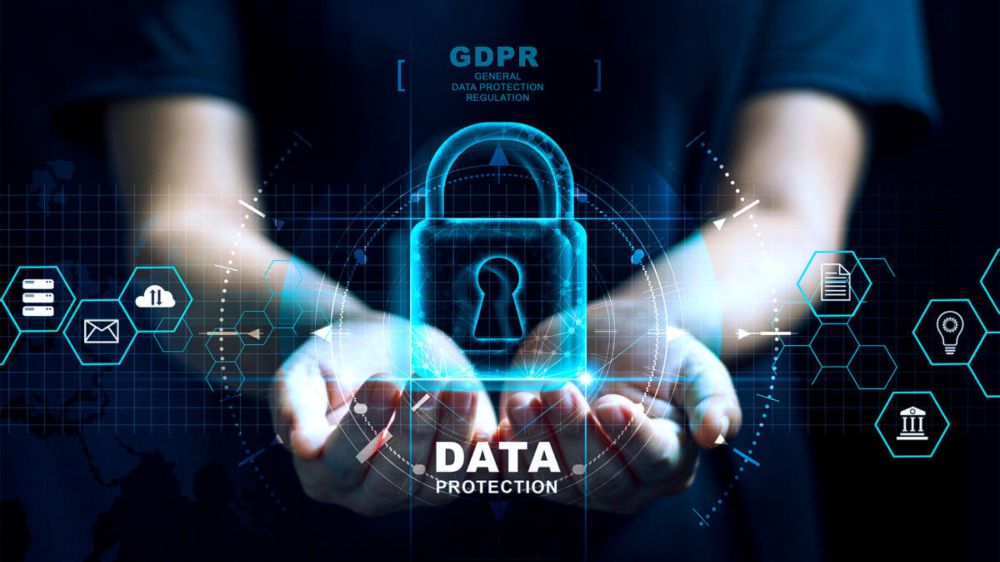The emergence of healthtech services has caused many difficulties in data loss prevention in healthcare. Throughout 2023, the U.S. market has witnessed more than 700 healthcare data breaches.
As this sensitive data is leaked, it can entail severe consequences. The risks include identity theft, ransomware, and even damaging disruptions in healthcare operations. These threats, as a result, will put patients in danger and hinder the ability to provide quality care to healthcare organizations as well.
Regarding this, it is time for organizations to adopt a more effective strategy for data loss prevention in healthcare.
Types of Healthcare Data
Healthcare data includes information of both patients and parties involved in healthcare operations. There are six primary categories under healthcare data:
1. Electronic health records (EHR): The data is generated during the point of care, typically within medical facilities, hospitals, or clinics, with comprehensive information on demographics, diagnosis, treatment, prescription drugs, lab tests, hospitalizations, and insurance.
2. Administrative data: This category includes hospital discharge information, physician visits, personal care homes, home care, and pharmaceutical prescriptions. The data will be reported to government agencies or other relevant entities based on the region.
3. Claims data: This refers to transaction information between patients under insurance and the healthcare delivery system.

4. Patient/disease registries: Registries are data that focus on chronic diseases such as asthma or diabetes.
5. Health surveys: Surveys from official healthcare institutes such as National Health & Nutrition Examination Survey can reflect public health conditions and detect symptoms of chronic diseases.
6. Clinical trial data: These data include healthcare experimental results on research publication platforms such as OpenTrials.
Alarming Threats of Data Loss in Healthcare
The mentioned emergence of many healthcare data types and storage platforms can expose its to more data control concerns, raising the vulnerability to many threatening risks in data security, including:
- Ransomware
- System complexity
- Unsecured mobile access
1. Ransomware
Ransomware is one of the most prevalent cybersecurity threats in this industry, in which the software restricts computer or file access until a ransom is paid. In recent years, numerous hospitals have suffered from these risks, leading to a vast amount of financial losses, which can amount to up to $9 million per breach.
Just last year, Atlantic General Hospital experienced a significant ransomware that compromised patient data, including names, social security numbers, dates of birth, diagnoses, and financial account information.

2. System Complexity
The complicated interconnection between data resources can expose data to more security risks. For instance, many healthcare organizations link various databases together, such as patient’s payment information with the healthcare system. These networks, consequently, become more vulnerable as a breach in one point can compromise the others’ security. Inadequate training of employees working with such complicated data may also result in human errors, including unintentional data deletion and inappropriate sharing that leads to data loss.
3. Unsecured Mobile Access
Significant cybersecurity risks, which usually include data breaches and identity theft, are often down to unsecured mobile device usage. For instance, a recent occurrence at Sunglo Home Health Services in Harlingen, Texas, where a laptop containing sensitive patient information was stolen, leading to severe data loss. Moreover, if the devices are connected to unsecured networks, high chances are that the data stored on them could also be vulnerable to significant security threats.
How Can Data Loss Threaten Healthcare Organizations?
Data loss presents substantial risks to healthcare organizations, compromising their operations and impacting patient perceptions. These risks can result in three significant consequences:
- Operational Disruption
- Incurred Costs
- Loss of Patient Trust
1. Operational Disruption
Data loss can substantially impact healthcare operations, resulting in downtime and affecting patient care and organizational efficiency.
Healthcare providers rely heavily on data flow to deliver optimal care. A lack of access to these critical patient documents, such as medical history, due to data loss may create challenges for healthcare providers in creating appropriate treatment plans. Data recovery after such healthcare incidents takes time, often more than 100 days, significantly delaying organizational operations.

2. Incurred Costs
Data breaches can have a significant financial impact on organizations, which burdens their operations. According to an Experian report, the average cost of compromising a healthcare record is $211. This has been excluded from the potential HIPAA Security Rule fines, which also can reach up to $25,000 per incident per year. There are also additional expenses related to necessary hardware and software upgrades to prevent future breaches and address security gaps.
3. Loss of Patient Trust
Protecting sensitive healthcare data is crucial for building trust between patients and healthcare providers. A data breach can destroy this mutual relationship, driving patients away and causing irreversible damage to an organization’s reputation. In fact, 66% of patients intend to switch providers if their personal information is compromised. This emphasizes the importance patients attach to data loss prevention in healthcare when choosing a treatment facility.
Data Loss Prevention Technologies in Healthcare
New data loss prevention (DLP) technologies detect anomalies, mitigate data breaches, and offer contextual insights. DLP applies a diverse range of security measures, such as firewalls, endpoint detection and response tools, anti-virus software, artificial intelligence, and machine learning. Some emerging techniques include:
- Rule-based matching: In rule-based matching techniques, the known patterns are applied to identify data that follow specific rules. For example, in the United States, a Social Security number consists of nine digits. When such a pattern is detected, it triggers a flag for subsequent review and analysis to ensure data security and compliance.
- Database fingerprinting: This technology is also named exact data matching. It focuses on searching structured data within a file to find an exact match. Modern DLP usually employs fingerprinting technology to precisely identify and regulate protected health information (PHI). Policies can also be set up to activate when a specific patient’s Social Security number (SSN) is detected along with their patient name or ID. By employing these types of actual patient data instead of generic patterns, this technique significantly enhances accuracy and reduces false positives.
- Exact file matching: Another approach is exact file matching, where matches are identified by comparing cryptographic hashes of file contents, rather than analyzing the entire file contents itself. This method ensures robust data integrity and enhances efficiency in data analysis and comparison processes.
- Contextual Analysis: When assessing data transmission, multiple factors are taken into account, including the user’s role, physical location, and the application being utilized. This approach effectively minimizes the occurrence of false positives and enhances the accuracy of policy enforcement.
- Partial document matching: This technique enhances DLP by searching for files that partially match pre-set patterns. For example, it can identify instances where different users have completed multiple versions of a form. The process, therefore, assists in enhancing the accuracy of data loss prevention in healthcare and leveraging data security compliance.
- Statistical analysis: Statistical analysis pinpoints violations. In particular, technology like Machine Learning and Bayesian is applied to interpret data for potential risks and non-compliance detection. This method allows DLP systems to efficiently crawl and respond to breaches such as unauthorized access or data leakage, ensuring the highest security level.
- Pre-built categories: Pre-built categories utilize rules derived from the classification of data by healthcare delivery organizations (HDOs). These categories are designed to identify data based on its sensitivity and security requirements. By leveraging this classification framework, DLP systems can effectively streamline their data protection efforts and enhance their overall security posture.
- User behavior analytics: User behavior analytics (UBA) is a powerful tool that helps organizations gain insights into user actions and detect anomalies.
Best Practices for Data Loss Prevention in Healthcare
Organizations must establish practical and well-oriented practices to drive successful DLP. Here are some winning DLP approaches:
- Preventing unauthorized transfers of health data
- Managing removable devices
- Restricting access to data
- Monitoring and logging
- Adopting artificial intelligence and machine learning

1. Preventing Unauthorized Transfers of Health Data
Access to healthcare data should only be provided to people who need it. The ultimate goal is to ensure that the data is highly protected at all channels.
Employees may be tempted to use unauthorized third-party apps or services to streamline their tasks. These tools include popular messaging apps, personal emails, or cloud storage services, which can invite data breaches due to its unclear sources.
To solve this, DLP solutions can utilize contextual scanning and content inspection tools, along with predefined policies, to detect health data in files and emails in real time. This proactive approach allows for the prevention of unauthorized data transfers before they happen.
2. Managing Removable Devices
Employees often use removable devices such as USBs or external drives to copy large amounts of data, which pose risks of loss, theft, or malware exploitation.
Data loss prevention in healthcare in this case can offer many practical approaches to solve this problem. Some solutions are equipped with device control features, hence allowing organizations to limit or block the use of USB and peripheral ports to authorized company-provided devices. Meanwhile, other DLP solutions can enforce automatic encryption for data copied to USBs that restrict data access to users with the proper decryption key.
For example, an IP-guard DLP solution manages access permissions for USB devices, printers, email, and other mobile applications, as well as specific ports and IPs.
3. Restricting Access to Data
Healthcare data vulnerability often arises when it is stored locally on employees’ hard drives. Files containing sensitive information are often used once and then neglected or archived, rather than being properly deleted. This significantly increases the risk of data loss during phishing cyber attacks since local files are vulnerable to malware such as trojans and ransomware.
In this case, DLP tools can effectively scan data in hard drives for healthcare information. If unauthorized personnel are found to have this data on their computers, appropriate measures such as deletion or encryption can be taken.
For instance, at KMS Healthcare, unauthorized computers are prohibited from connecting to the internal network. This mechanism is set up to prevent the theft of confidential information and the spread of viruses or malware. Additionally, the company’s IT team also conducts weekly scans to detect and handle any suspicious files. Such measures will allow healthcare organizations to minimize the digital footprint of health records and ensure they are only stored where necessary.
4. Monitoring and Logging
By consistently monitoring and evaluating the security system, healthcare organizations can promptly identify vulnerabilities in cybersecurity. This proactive approach allows for the uncovering of cybercriminal tactics, as well as the mitigation of insider threats and other security risks. Besides, implementing long-term cybersecurity strategies and providing comprehensive employee IT security training also allows organizations to operate more cost-effectively and reduce data-related vulnerabilities.
5. Adopting Artificial Intelligence (AI) and Machine Learning (ML) for Better DLP
AI and ML with their boundless potential can assist DLP tools in consistently enhancing their ability to safeguard an organization’s valuable data resources.
With the emergence of cloud technology, categorizing and classifying data elements has become more complex, surpassing the capabilities of manual processes. DLP solutions powered by AI/ML algorithms in this case then can efficiently navigate this computing environment. These solutions quickly classify data elements as they are created and introduced into the infrastructure. Consequently, data-centered risks will be restricted, allowing healthcare organizations to administer information in a more organized manner.
DLP solutions that leverage AI/ML can also draw on lessons from past events to recognize and embed the most suitable safeguards into the platform. These applications will be employed to prevent sensitive file transfer through email and encrypt documents from certain programs, consequently decreasing external dangers and ensuring data-security compliance.
FAQs
1. What is Data Loss Prevention in Healthcare?
Data loss prevention in healthcare refers to the policies, technologies, and practices that prevent accidental or unauthorized disclosure of sensitive patient information. It involves implementing security measures, such as encryption and access controls, to safeguard patient data from loss, theft, or misuse. By effectively managing and protecting healthcare data, DLP ensures compliance with privacy regulations and helps maintain the confidentiality and integrity of patient records.
2. Why Is DLP Crucial in The Healthcare Sector?
By implementing healthcare data loss prevention techniques, healthcare organizations can yield numerous benefits, including:
- Saving costs: It is more cost-effective to invest in data protection measures rather than risking a breach and incurring substantial expenses.
- Saving time: Many DLP solutions simplify deployment and management, providing endpoint protection for effective control of sensitive data from a unified platform. Applying the solution also minimizes the time invested in containing data leakage, which is obviously more efficient for healthcare organizations.
- Enhancing brand image: When an organization can meet the legally mandated requirements, it facilitates trust among existing patients and creates a good impression among prospective ones.
- Boosting data visibility: DLP solutions are intended to safeguard specific types of data using pre-configured or personalized policies. These tools can detect sensitive data within an organization’s network and oversee its usage. Consequently, healthcare institutions gain visibility into the storage, transfer, and utilization of sensitive patient information by their staff.
3. How Does HIPAA Influence DLP Strategies?
The HIPAA plays a crucial role in shaping DLO strategies as it establishes regulations and guidelines that aim to protect the confidentiality, integrity, and availability of protected health information (PHI). Adhering to HIPAA requirements is imperative for DLP strategies to prevent unauthorized access, disclosure, or loss of PHI. By doing so, organizations can maintain regulatory compliance and safeguard sensitive healthcare data.
4. How Can Healthcare Organizations Train Staff in DLP Best Practices?
Healthcare organizations can educate their staff on DLP best practices through the following strategies:
- Conduct comprehensive training sessions to emphasize data protection and role-specific DLP practices.
- Provide relevant resources like training manuals, guidelines, and online courses covering sensitive data identification, secure data handling, and data breach prevention.
- Simulate real-world scenarios for staff to practice applying DLP best practices and develop effective mitigation strategies.
- Foster a culture of security awareness and accountability, making data protection a shared responsibility among all staff members.
Implementing these strategies enhances staff training in DLP best practices and the overall security of sensitive data in healthcare organizations.
Let KMS Healthcare Elevate Your Healthtech Journey With Our Extensive Experience in DLP
The healthcare industry has now become a prime target for cyber attacks, especially during this era of digitalization. While digital advancements have the potential to revolutionize treatment offerings, they also bring forth security concerns. Mitigating these threats, therefore, necessitates expert guidance and comprehensive prevention measures to develop an effective data loss prevention strategy.
KMS Healthcare, with more than 14 years of experience in healthtech and accumulated expertise in DLP, will guide your organization to confident data security.
Interested in a collaboration? Book a consultation with KMS Healthcare today!

Reference
(n.d.). Healthcare Data Breach Statistics. The HIPAA Journal. https://www.hipaajournal.com/healthcare-data-breach-statistics/
(n.d.). Sunglo Home Health Services Suffers HIPAA Breach. The HIPAA Journal. https://www.hipaajournal.com/sunglo-home-health-services-suffers-hipaa-breach-210/
(n.d.). HIMSS 2022: Ransomware attacks threaten healthcare systems. Chief Healthcare Executive. https://www.chiefhealthcareexecutive.com/view/himss-2022-ransomware-attacks-threaten-healthcare-systems
(n.d.). Data Breach Consequences: Impact and Cost Analysis. Healthcare Compliance Pros. https://www.healthcarecompliancepros.com/data-breach-consequences

